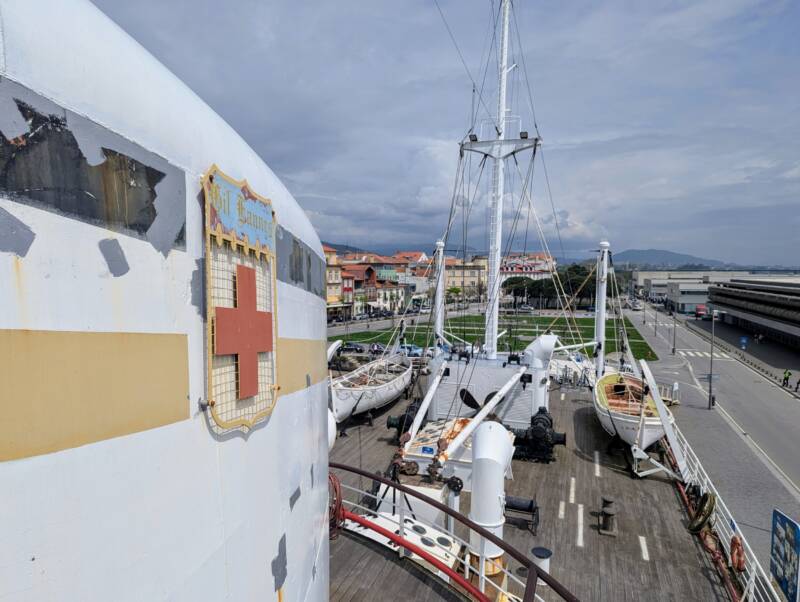Viana do Castelo, a hidden gem on the Portuguese coast, offers an enchanting blend of history and natural beauty. This comprehensive Viana do Castelo travel guide will help you discover everything this remarkable city has to offer. The city breathes culture, with its impressive historical buildings that tell stories of bygone eras and maritime heroes. Walk the Camino Portuguese and discover Viana do Castelo’s most beautiful spots!
During a stroll along the iconic Eiffel Bridge and the majestic hospital ship, you’ll feel history come alive.
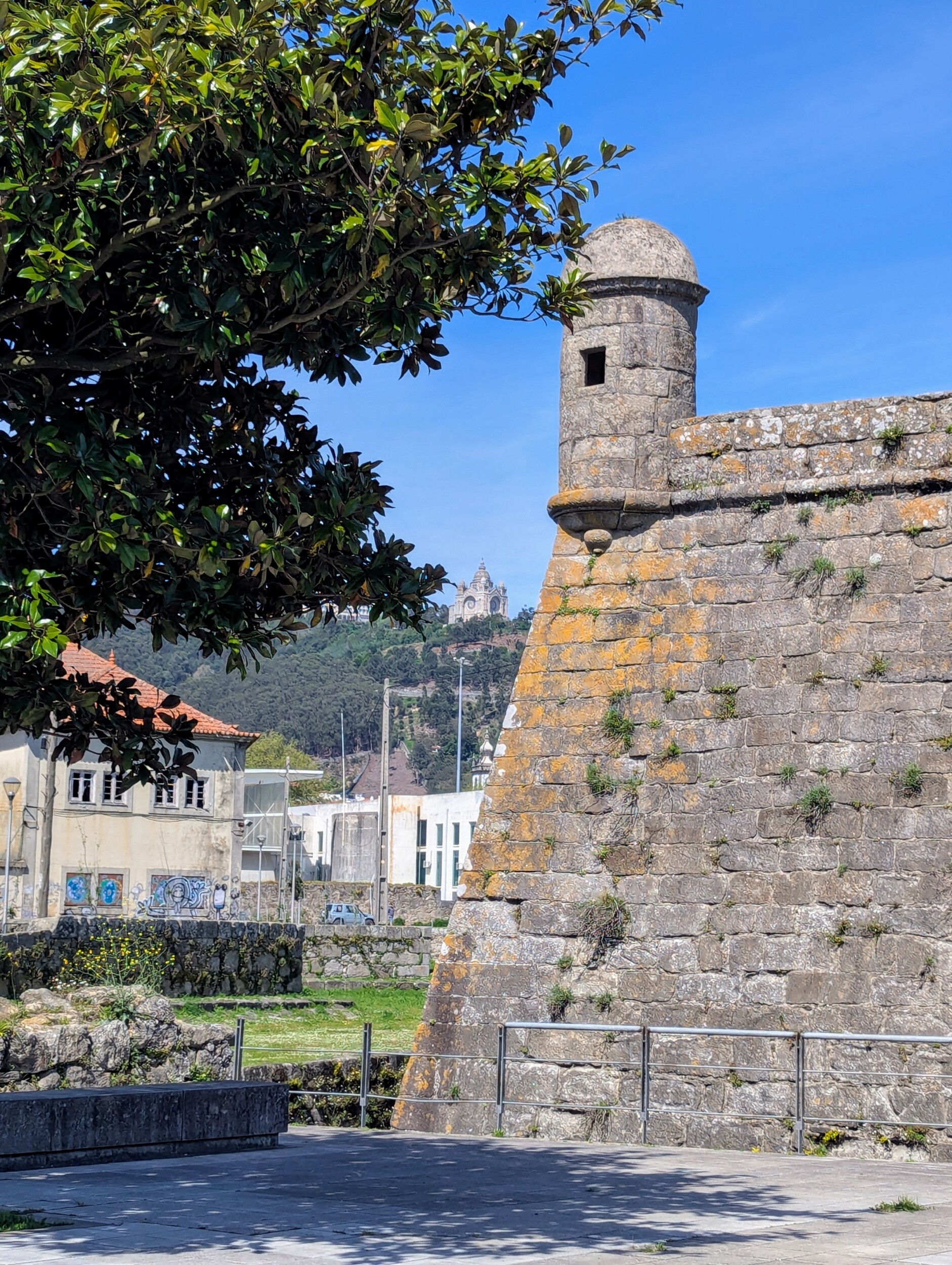
Moreover, Viana do Castelo is an important hub on the Camino de Santiago, where pilgrims and travelers refresh their spirits. Let yourself be carried away by the charm of this city, where every step brings you closer to the past.
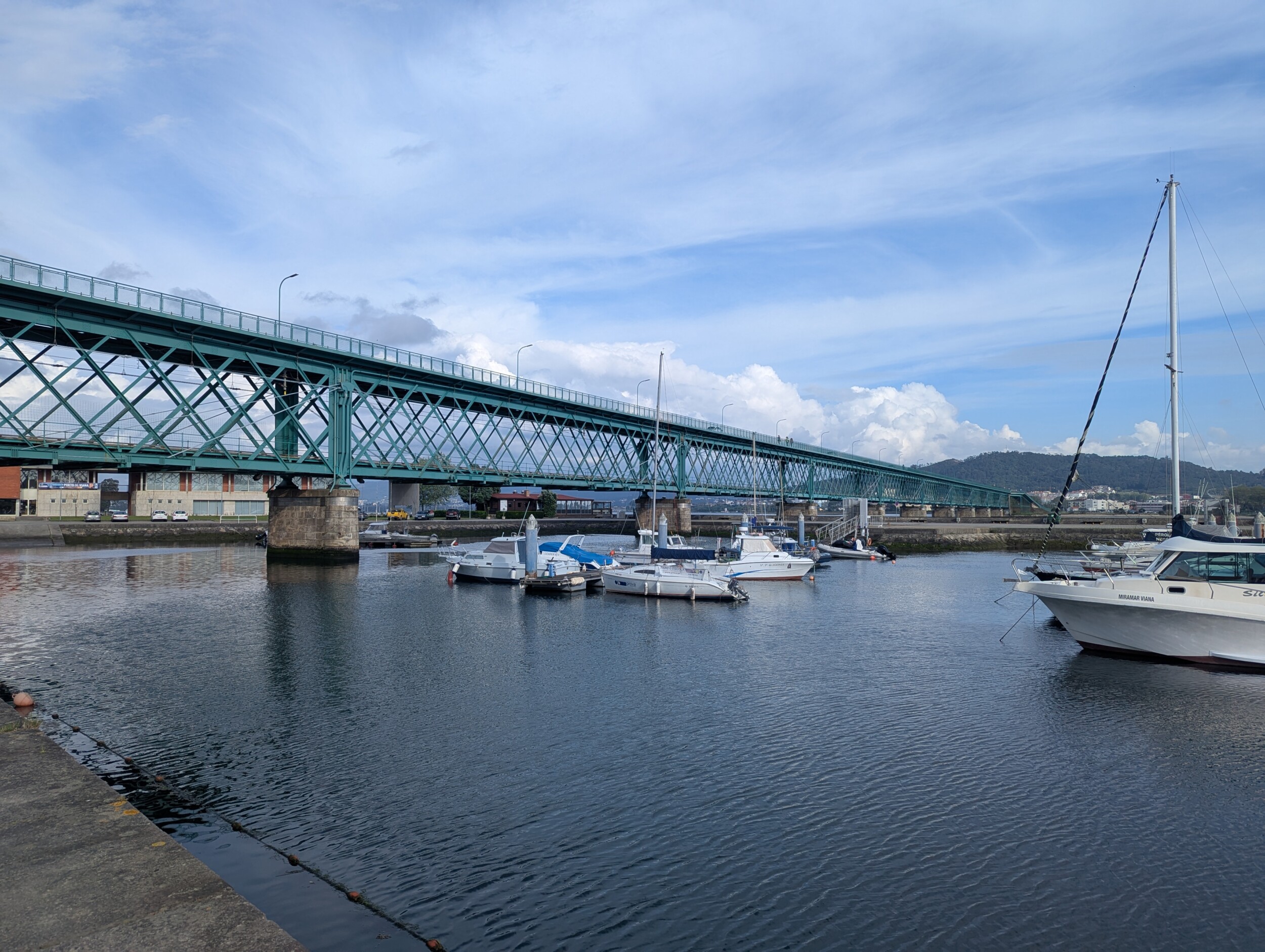
Ponte Eiffel at the entrance to Viana do Castelo
When you walk into Viana do Castelo via the Camino Portuguese, you cross a unique, defining bridge. It’s the Ponte Eiffel, designed by Gustave Eiffel. The iron bridge takes you over the Lima River and is no less than 563 meters long. I walked across it in the rain, eagerly looking forward to my hostel. I felt like there was no end to the long bridge!
The Ponte Eiffel replaced the old wooden bridge and immediately provided a train connection. More than 2,000,000 kilograms of iron were used to build the bridge and railway.
Gil Eannes Hospital Ship Museum
The most visited museum in Viana do Castelo is the hospital ship Gil Eannes. The museum guides you through surgery rooms and from sleeping quarters to the kitchen.
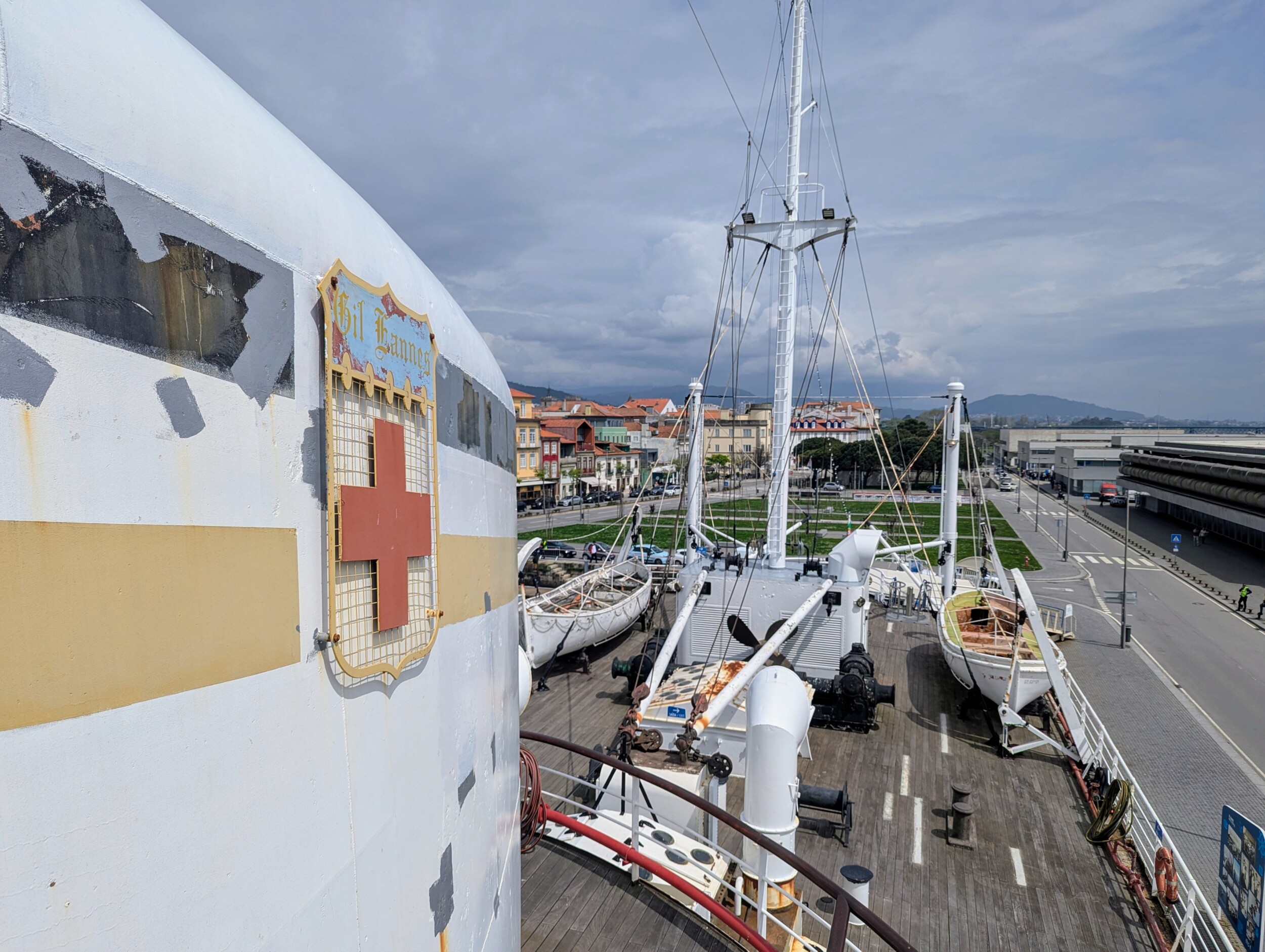
The ship, built in 1955, provides a beautiful glimpse into the past. The hospital ship served during colonial times (1960-1974) off the coast of Mozambique and Angola for marines and civilian aid. In the 80s and 90s, it served in support of fishing operations near Newfoundland and Greenland.
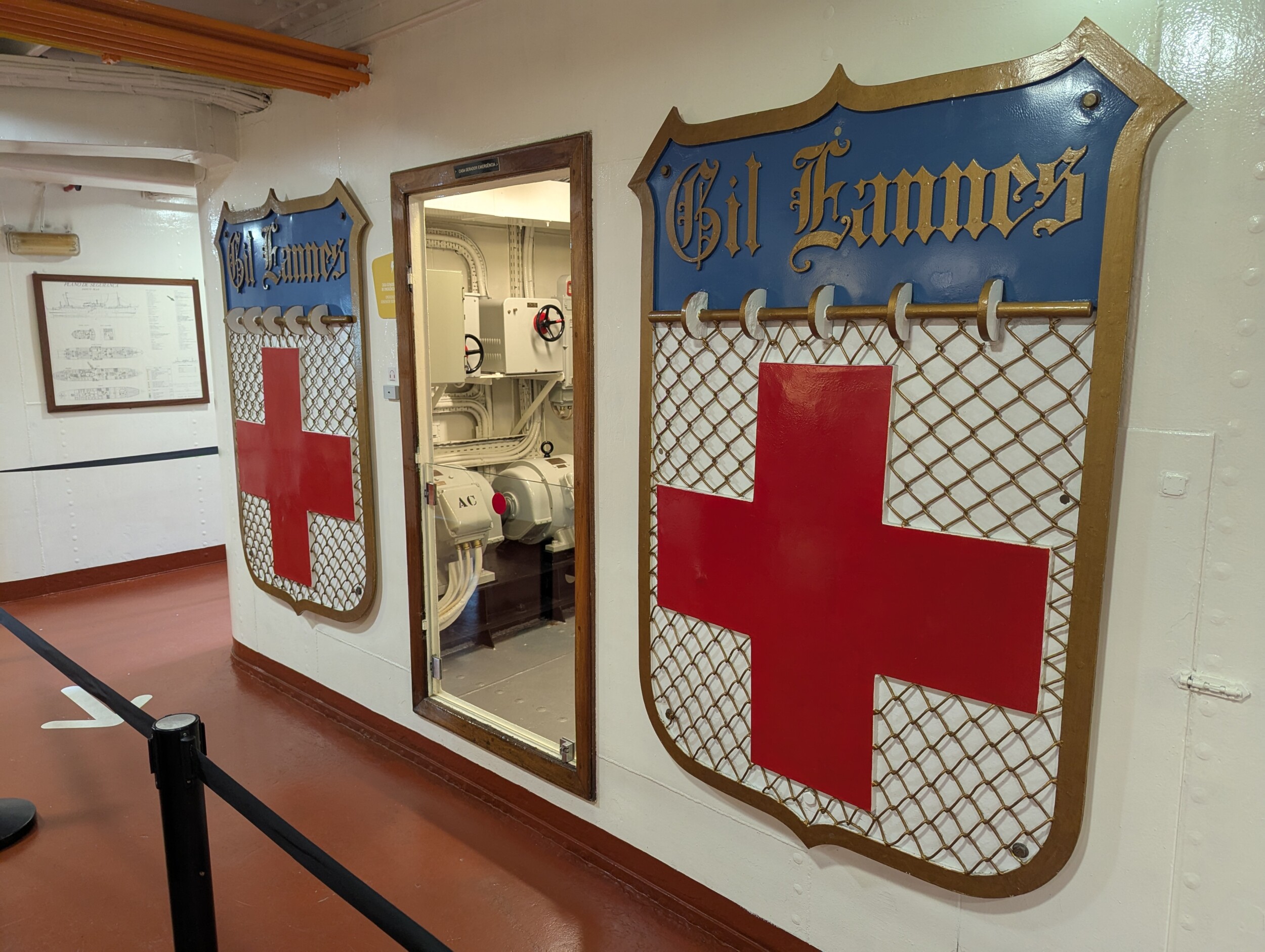
In the museum itself, I actually found nothing about the ship’s colonial history.
Other recommended museums to visit in Viana do Castelo are the Decorative Arts Museum or the Costume Museum.
The Complete Viana do Castelo Travel Guide
São Domingos Church
This church is historically significant. In this church lies the tomb of monk Bartolomé de los Mártires, the founder of the disappeared monastery of Santa Cruz. The only thing that remains of this monastery is this church.
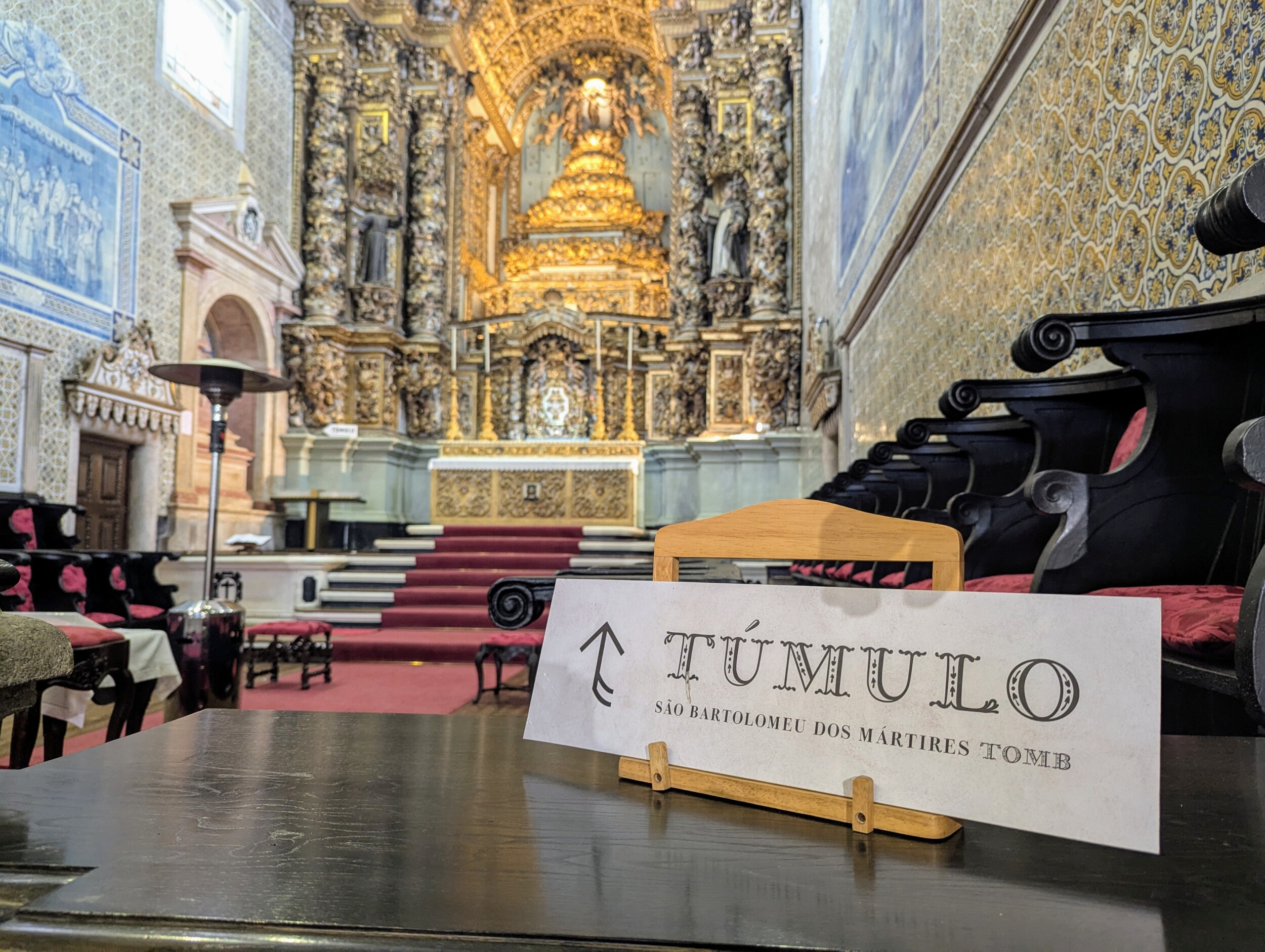
The church was originally built in the late 16th century, around 1600, by the religious order of the Dominicans. This was a period when the Catholic Church strengthened its influence in Portugal, especially after the Counter-Reformation. The congregations that gathered here contributed to the spread of beliefs and traditions within the community.
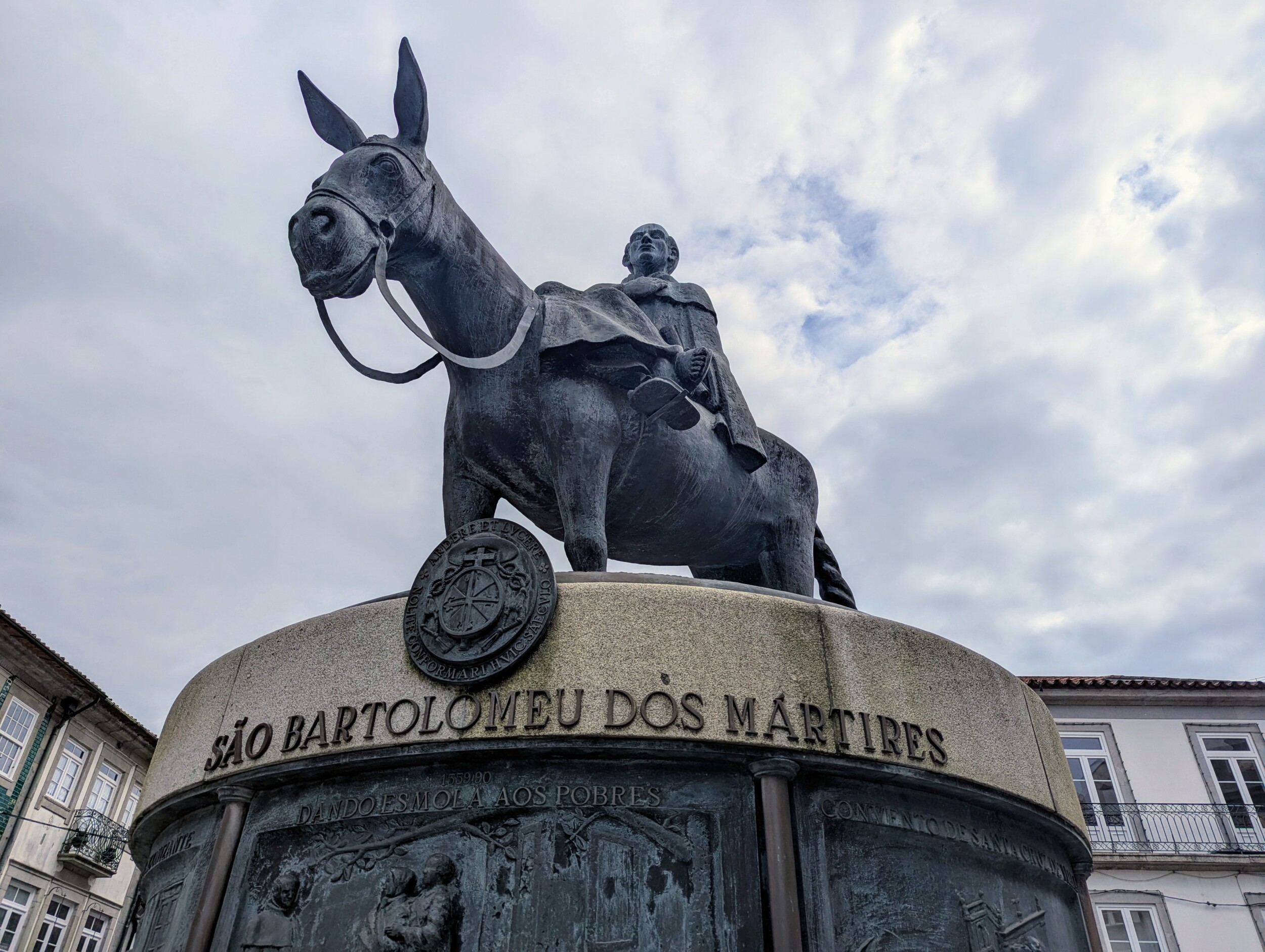
In the square opposite this church also stands the statue of Bartolomé. The monument depicts the monk Bartolomé sitting on a mule on a pedestal. On the pedestal, various phases of his life are depicted. The monk is the most important figure in the city’s history due to his dedication to the poor and sick.
Santuário de Nossa Senhora da Agonia
I could see the bell tower of the Santuário de Nossa Senhora da Agonia almost from the São Domingos church mentioned earlier. The tower, built in 1868, stands separate from the church. The church was originally a chapel of the Stations of the Cross, and the pilgrimage of 14 phases of Jesus’s last day that they performed went around the church.
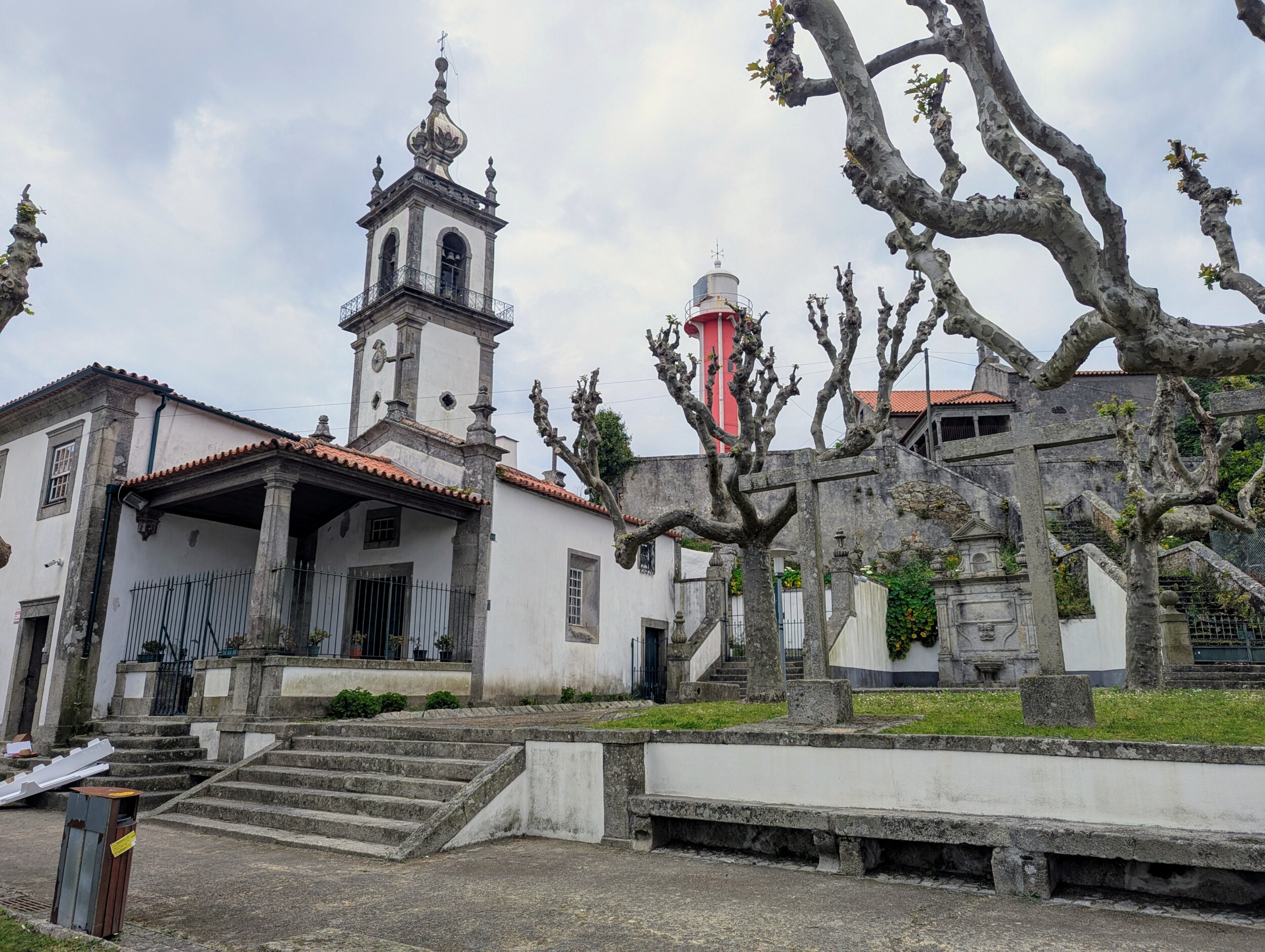
The church is truly beautifully painted inside and furnished in baroque style.
Forte de Santiago da Barra
When you stand in front of the Santuário de Nossa Senhora da Agonia, you look over a large park and see this fort. The fort is strategically built at the mouth of the Lima River. When you look at the fort from above, you can see it has a star shape. Construction of this fort began in the 15th century.
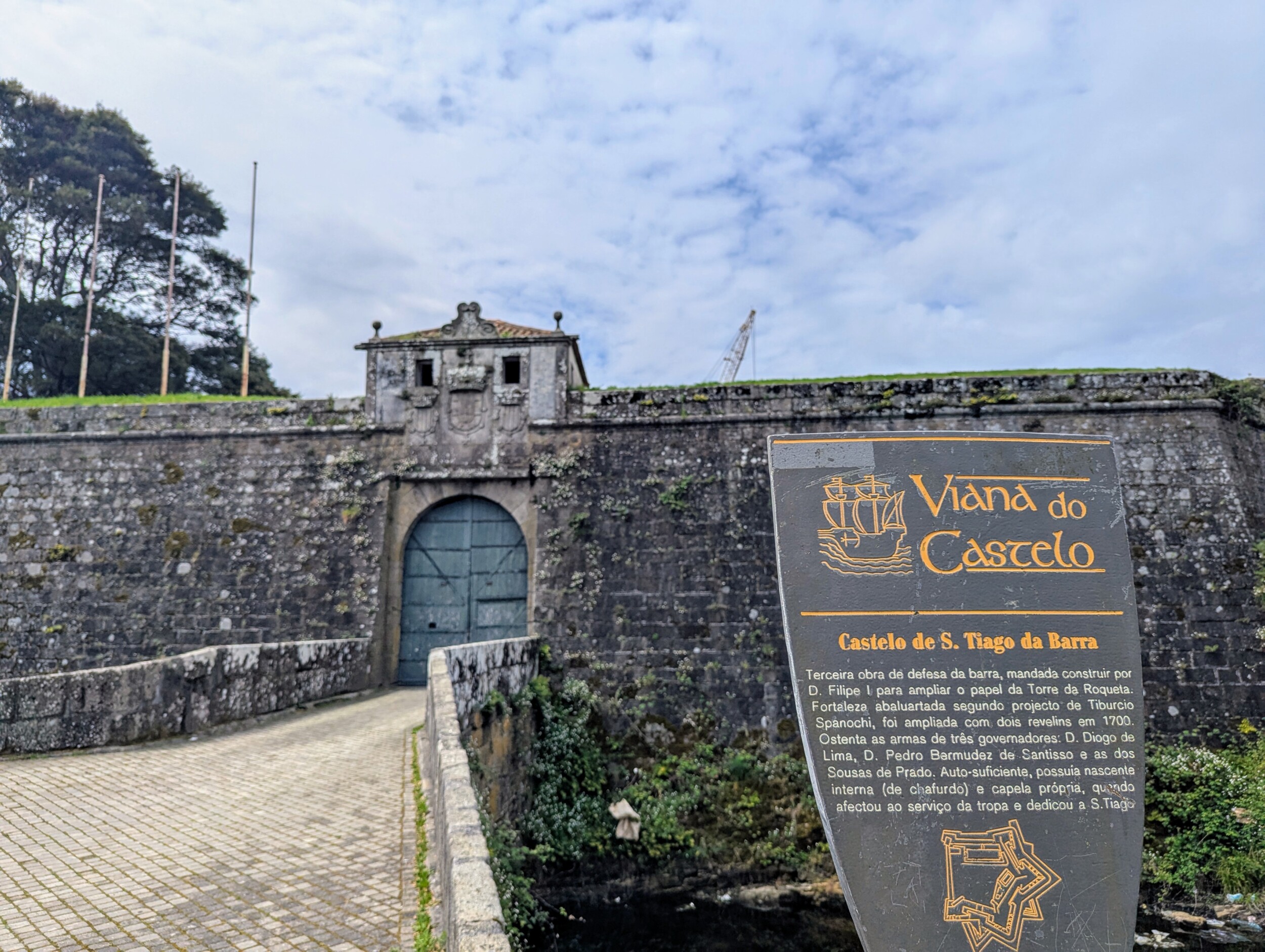
Monumento a Viana
In front of the fort, on the harbor side, stands this monument. This monument was unveiled as part of celebrating the 150th anniversary of elevation to city status. It was designed by Manuel Rocha and she holds a flower as if welcoming everyone who enters. In her other hand, she holds a boat, symbolizing the fishermen of Ribeira de Viana do Castelo.
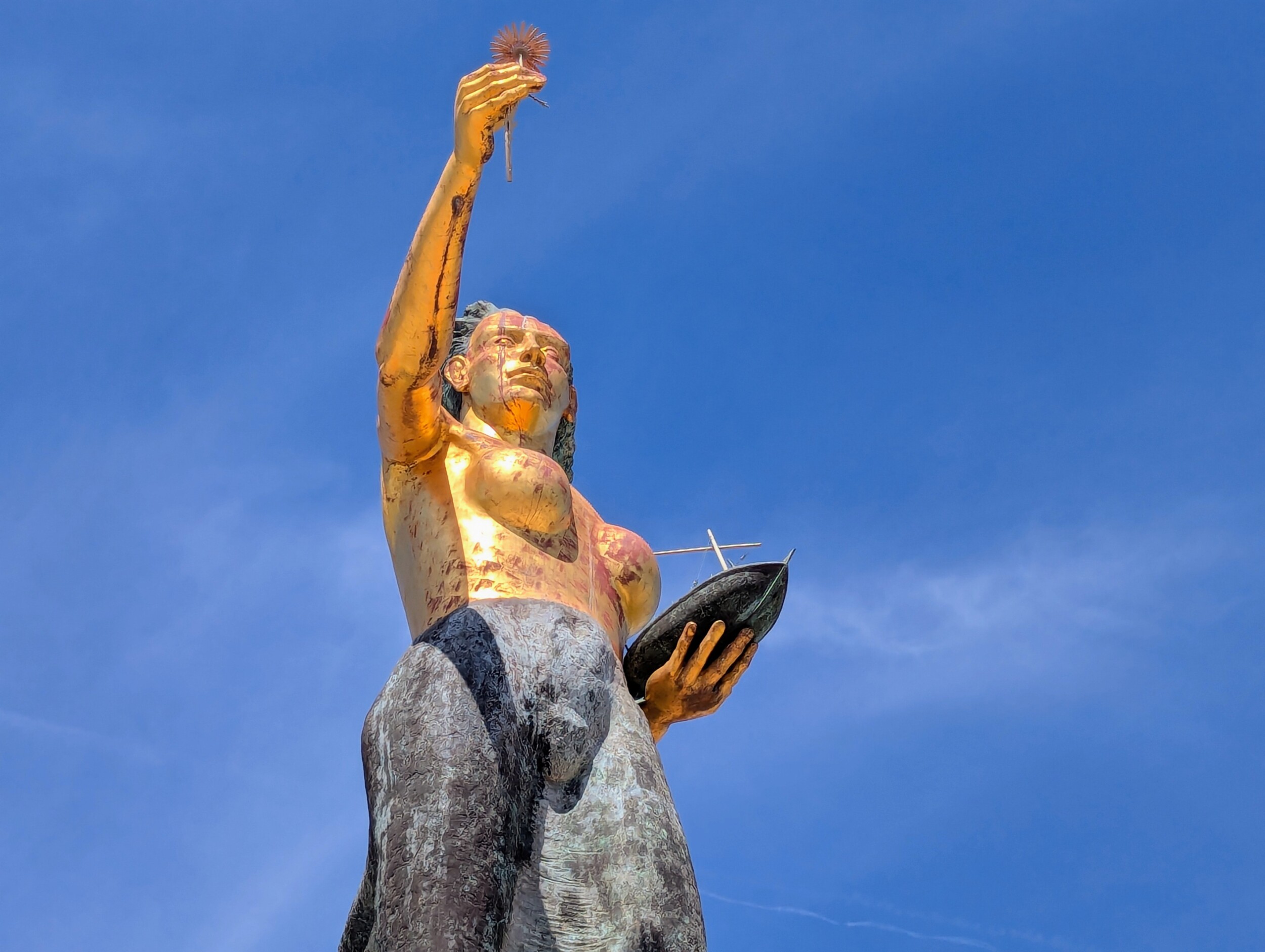
Other recommended spots include: the train station, which is said to be a beautiful building. It was under scaffolding when I was there. Where I ended up was a huge, modern covered shopping center next to the station. If you enjoy shopping, this is really a nice center.
Pastelaria Manuel Natário
This pastry shop caught my attention because there was a huge queue at the door. I didn’t go inside for that reason, but I can recommend having a treat here. In Viana do Castelo, this pastry shop is known for its delicious pastries and specialties with 85 years of history.
They bake 1000 Bolas de Belém daily, a roll with delicious cream. Viana do Castelo is known for its traditional pastries, such as sidónio and Torta de Viana. And maybe you’ll try them there?
How Will You Get to Santa Luzia?
The Santa Luzia Basilica is truly the city’s main attraction. From every corner, this imposing basilica is clearly and prominently visible.
There’s a small train that goes up, the funicular that slowly helps you up the mountain. There are also stairs that take you up, or will you take an Uber?
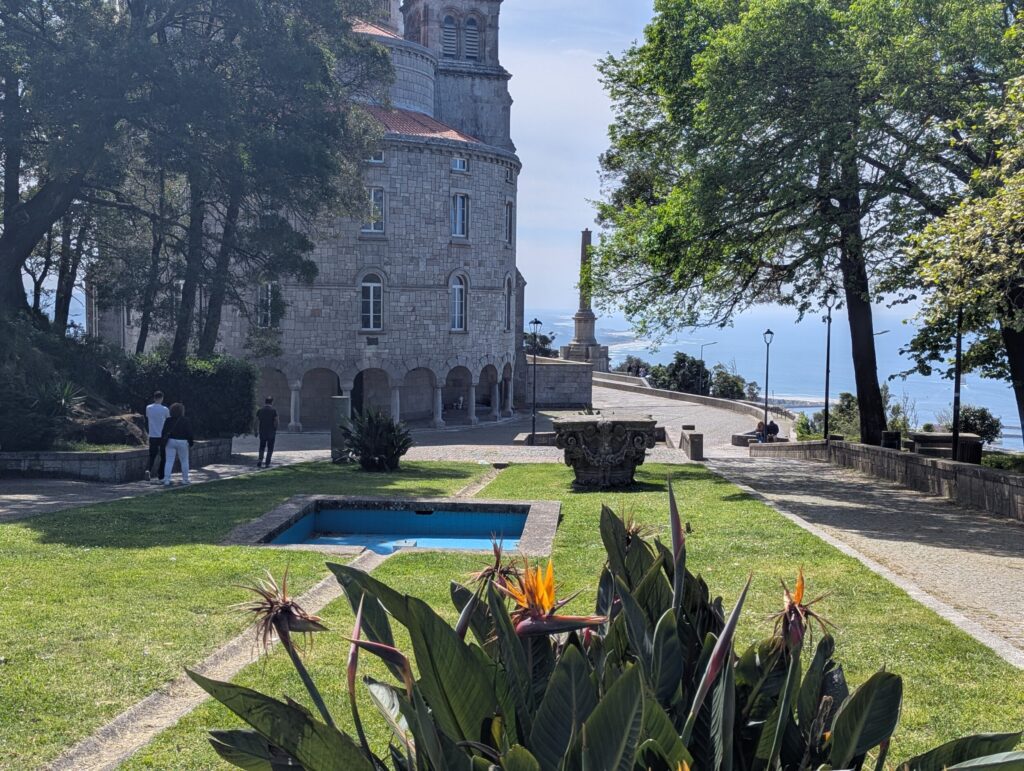
When I went up, unfortunately the little train (Funicular) was broken and I took a replacement bus. I would have naturally taken the stairs if I hadn’t had several blisters on my heels and toes.
Basílica de Santa Luzia
A beautiful basilica with one of the most beautiful views in the world, if I’m to believe National Geographic. I read it on various sites… I must say the view is beautiful, but the most beautiful in the world?
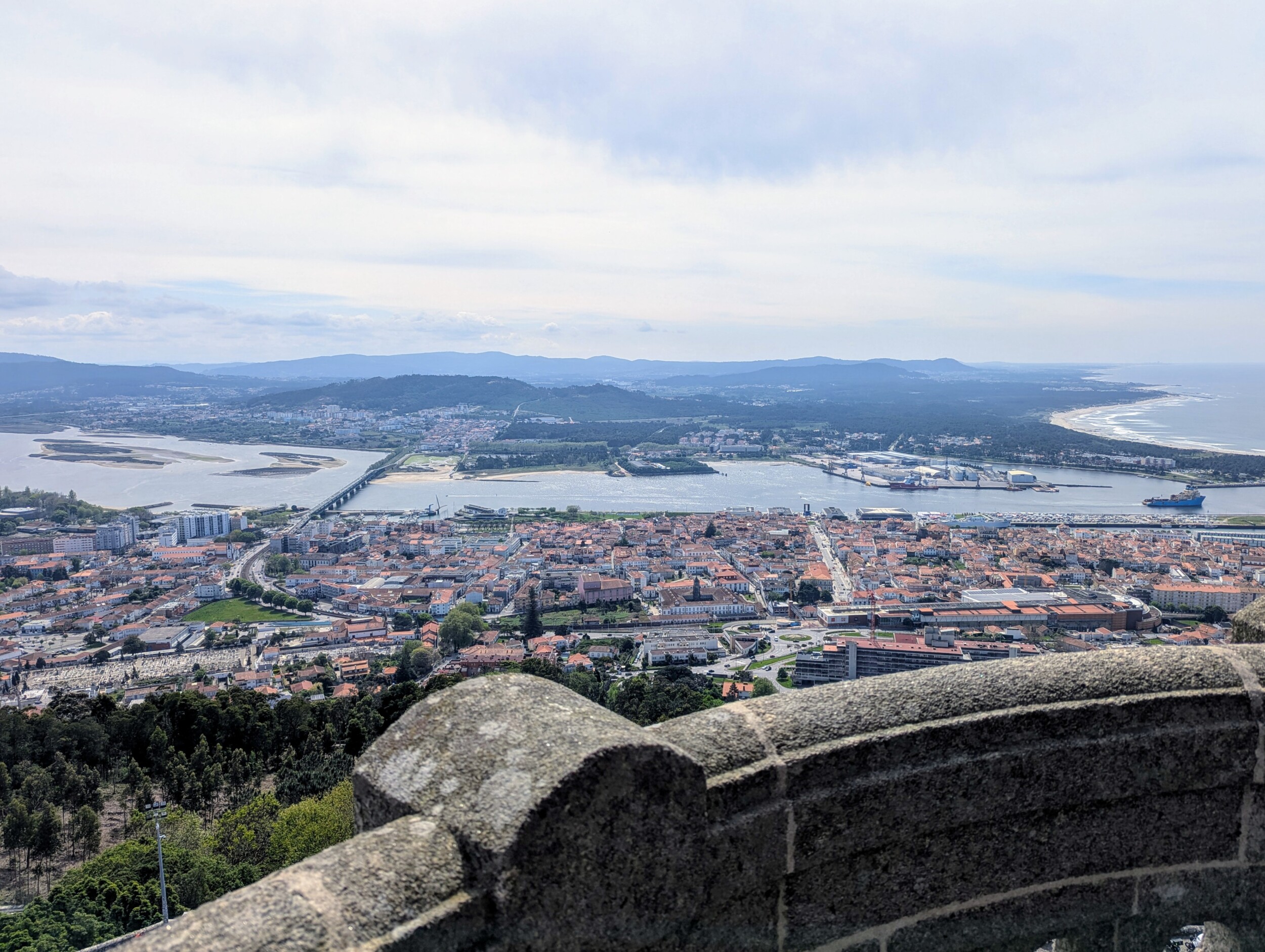
When I’m at the very top of the tower, after climbing 145 steps, I indeed have a beautiful view over the land, the Lima River, and the sea. But I certainly can’t say I’m enchanted. This stunning viewpoint is a highlight of any Viana do Castelo travel guide.

The Santa Luzia Basilica is also beautifully painted inside, and through the round, colorful stained glass windows, the light from outside comes in beautifully. The basilica was built in Romanesque-Byzantine style by architect Miguel Ventura Terra.
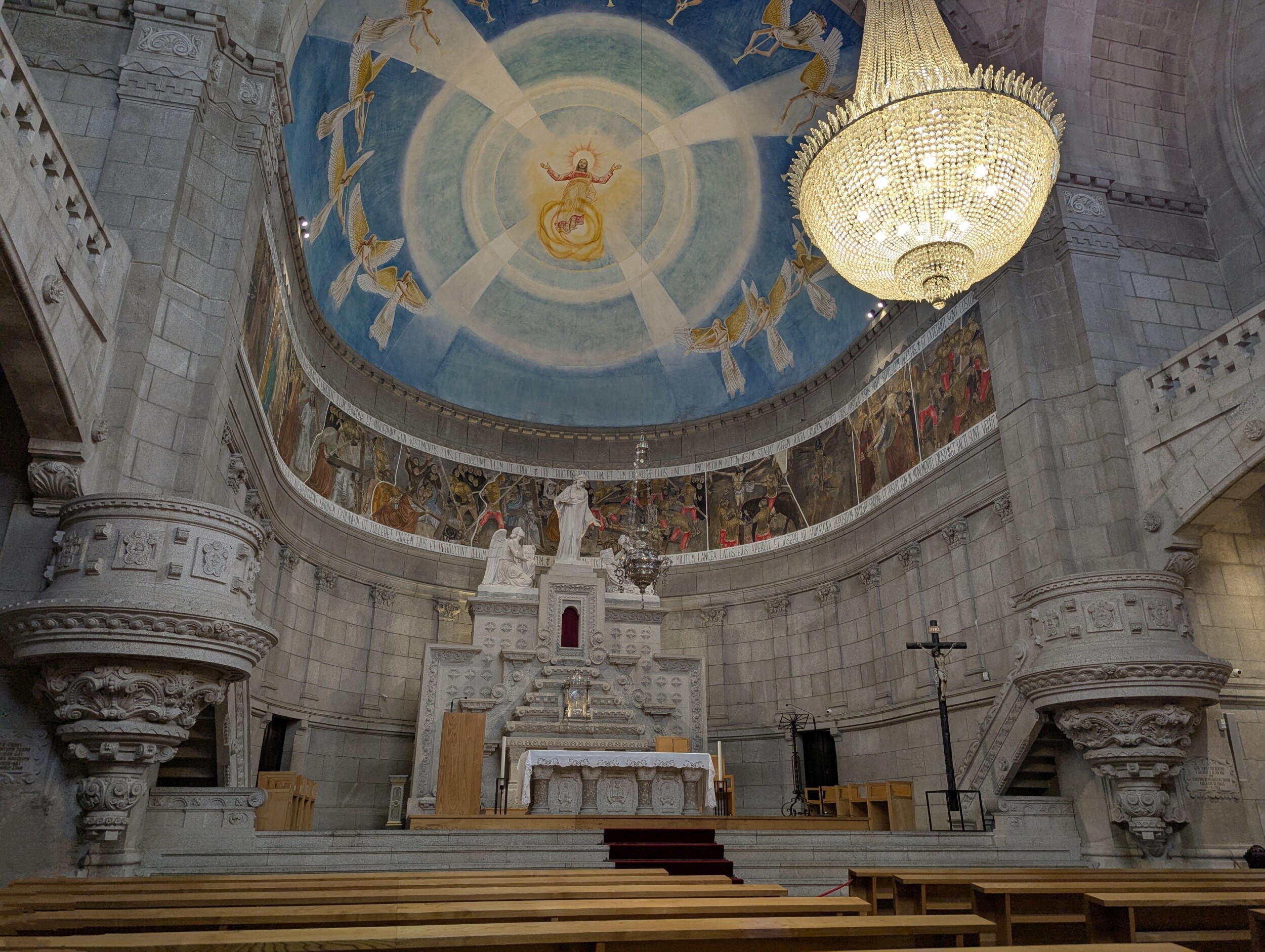
Modern Architecture in Viana do Castelo
If you find this interesting, you should go back toward the Gil Eannes Hospital Ship and then walk along the quay. There you’ll find the Centro Cultural de Viana do Castelo and Biblioteca Municipal and the Praça da Liberdade where you’ll find the monument for all people who fought for freedom.
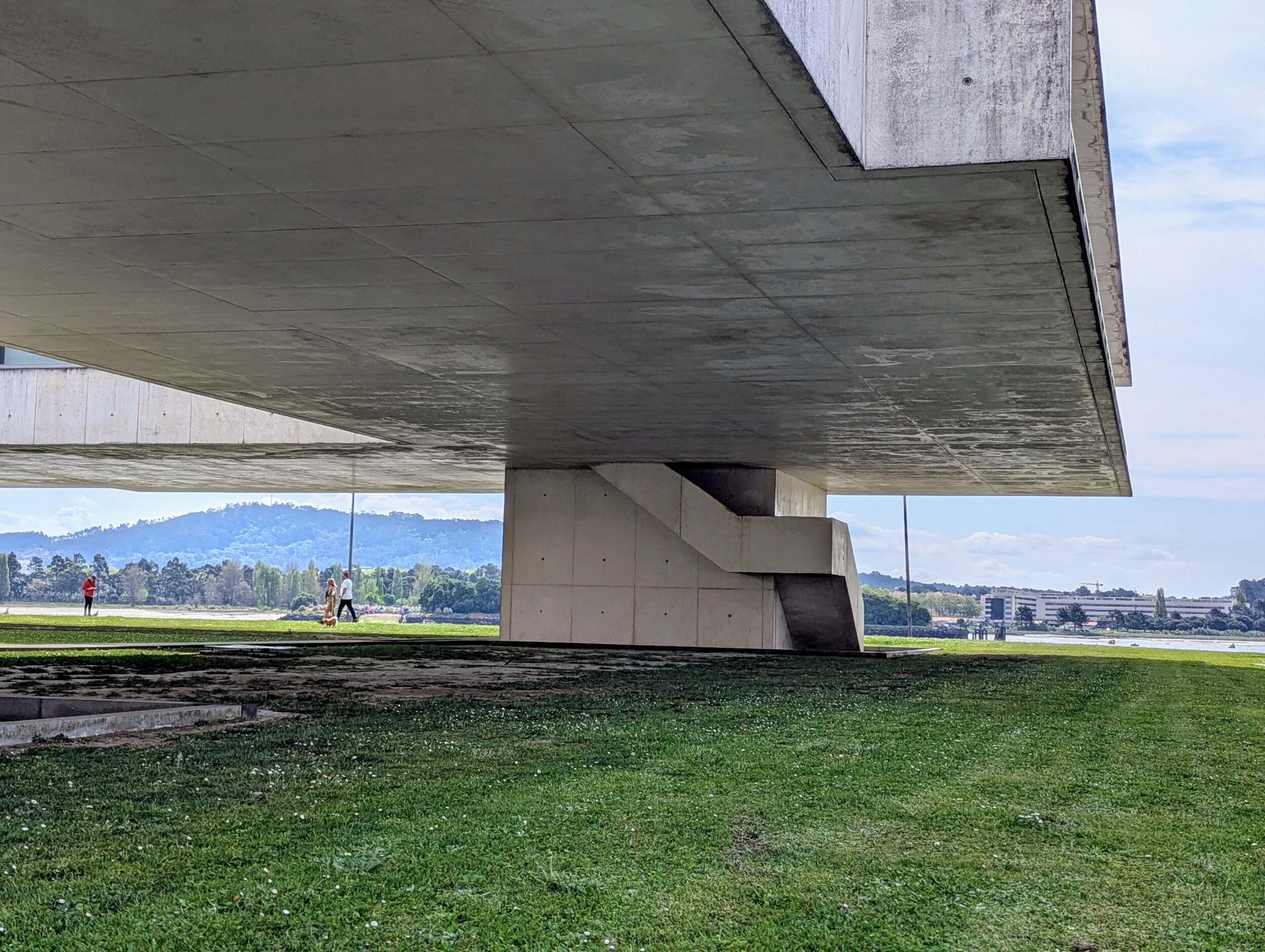
Arcos do Fincão
Just outside the city, you’ll find this gem that every Viana do Castelo travel guide should mention. The city is really nice to visit, but this definitely shouldn’t be missed, especially if you like walking. It’s a bit off the Camino Portuguese but definitely worth it.
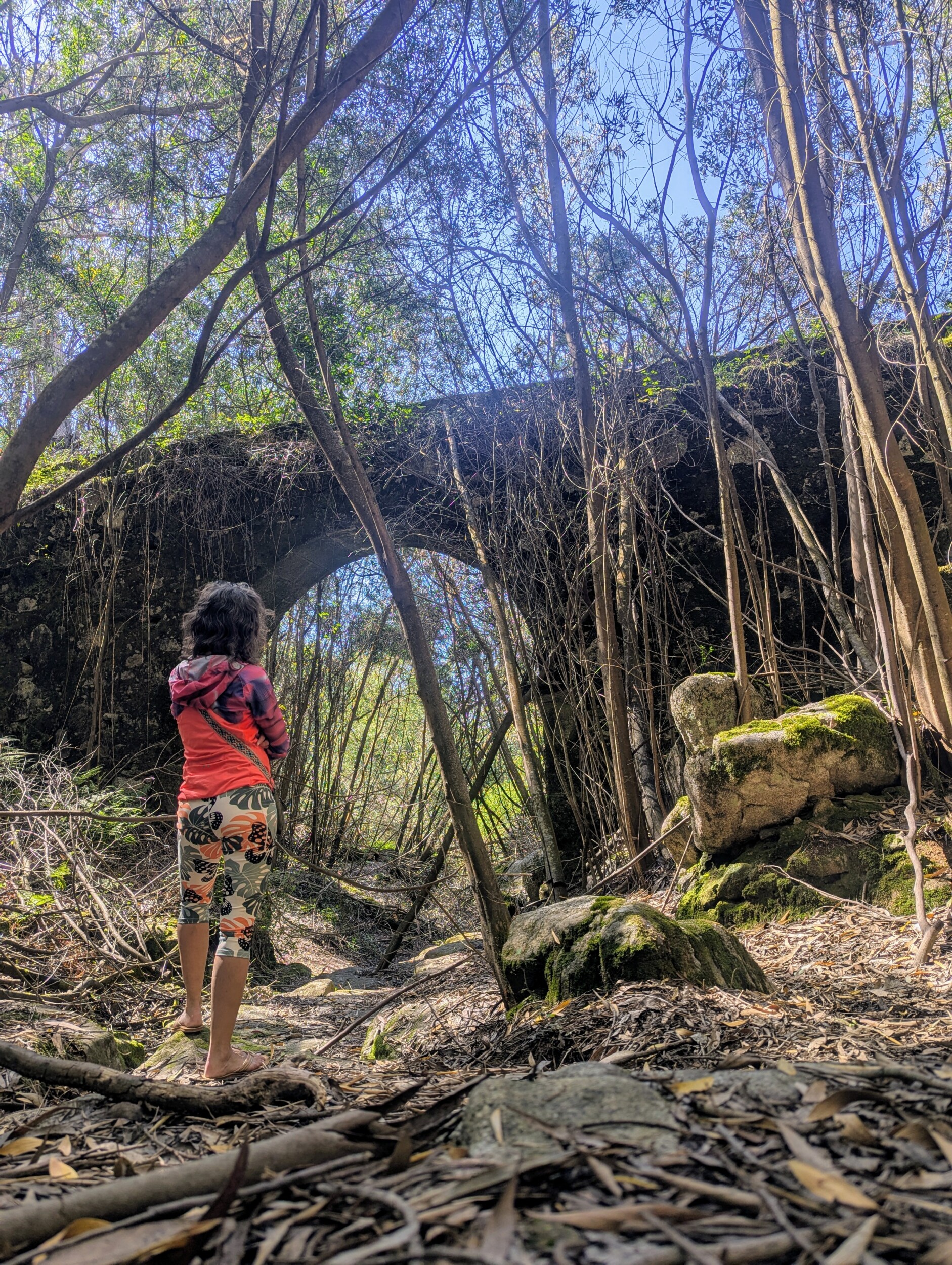
How do you get to Arcos do Fincão? In the city, you’ve probably seen the yellow arrows; if you follow them southward, you’ll pass by it. If you then go right off the camino here (41°42’23.9″N 8°50’38.8″W), you’ll reach two beautiful arches at the end.
Go left immediately after the first arch and walk up between the two walls. Then walk a stretch over and along this old aqueduct. Halfway through, you’ll encounter another arch in the middle of the forest.
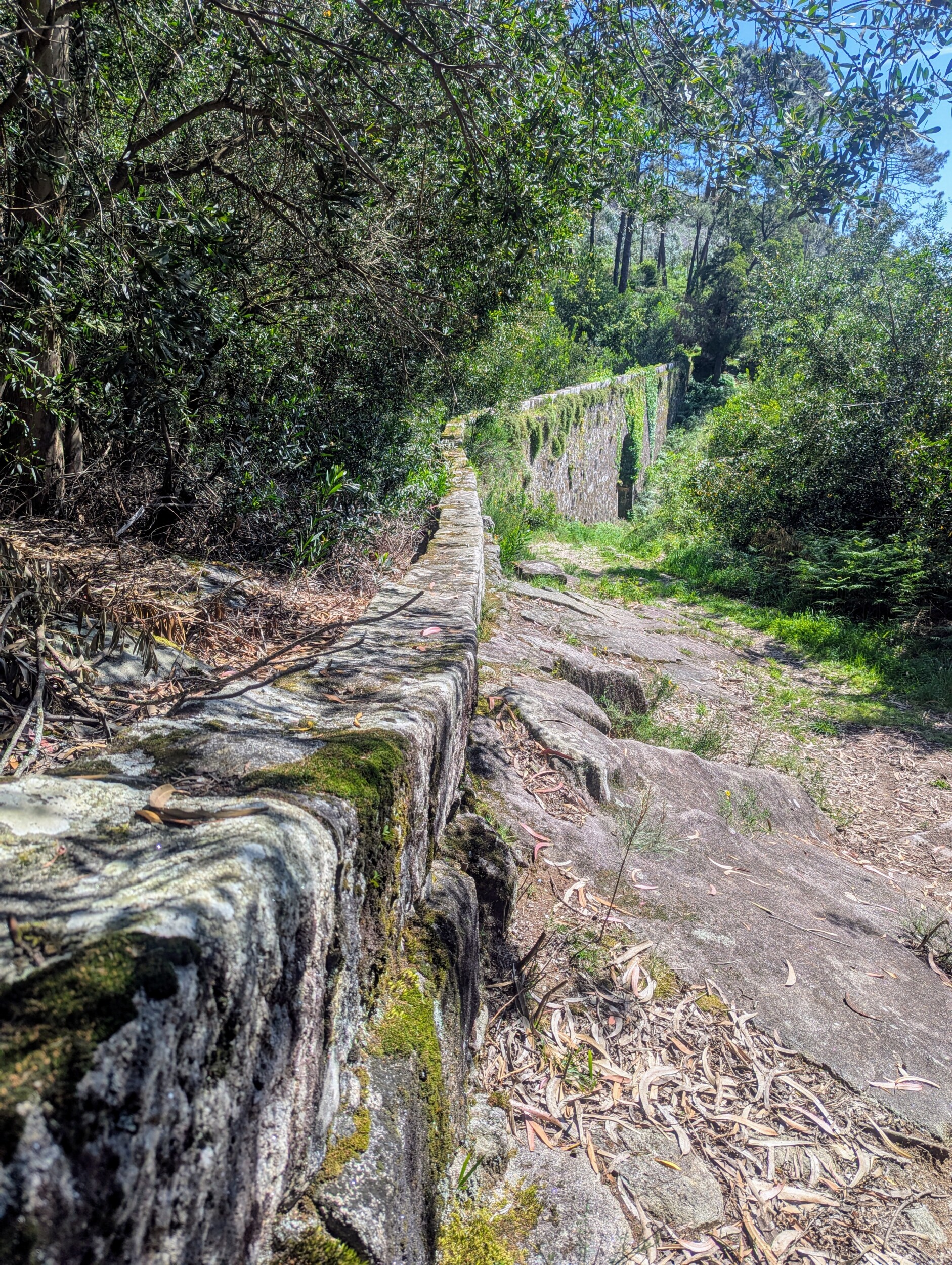
I found it very interesting and a beautiful stretch to walk! At this point (41°42’45.2″N 8°50’28.8″W) you can go back, turn left, and walk toward the village. I turned around here to walk back again, once more along this beautiful stretch. You can of course also just continue walking.
Beaches of Viana do Castelo
There are two beaches near Viana do Castelo: Praia Norte and Praia do Cabedelo. Praia Norte is located north along the coast and Praia do Cabedelo is located south of Viana do Castelo.
Do you know which beach is perfect for kitesurfing near Viana do Castelo? That’s Praia da Amorosa and it’s located just a bit further than Praia do Cabedelo and in front of the small village of the same name, Amorosa. This Viana do Castelo travel guide wouldn’t be complete without mentioning the perfect beaches for relaxation.
Are you going to walk the Camino Portuguese? Then a rest day in Viana do Castelo is certainly not a punishment.
Where to Stay in Viana do Castelo
No Viana do Castelo travel guide would be complete without accommodation recommendations. Here are the best places to stay:
Albergue de Peregrinos São João dos Caminhos
This hostel is located in a monastery (Convento do Carmo / Frades Carmelitas Descalços) and I found it very interesting. It’s an old and imposing building; we were led through various corridors before reaching our room. Next to the hostel is a beautiful church where mass is held every day.
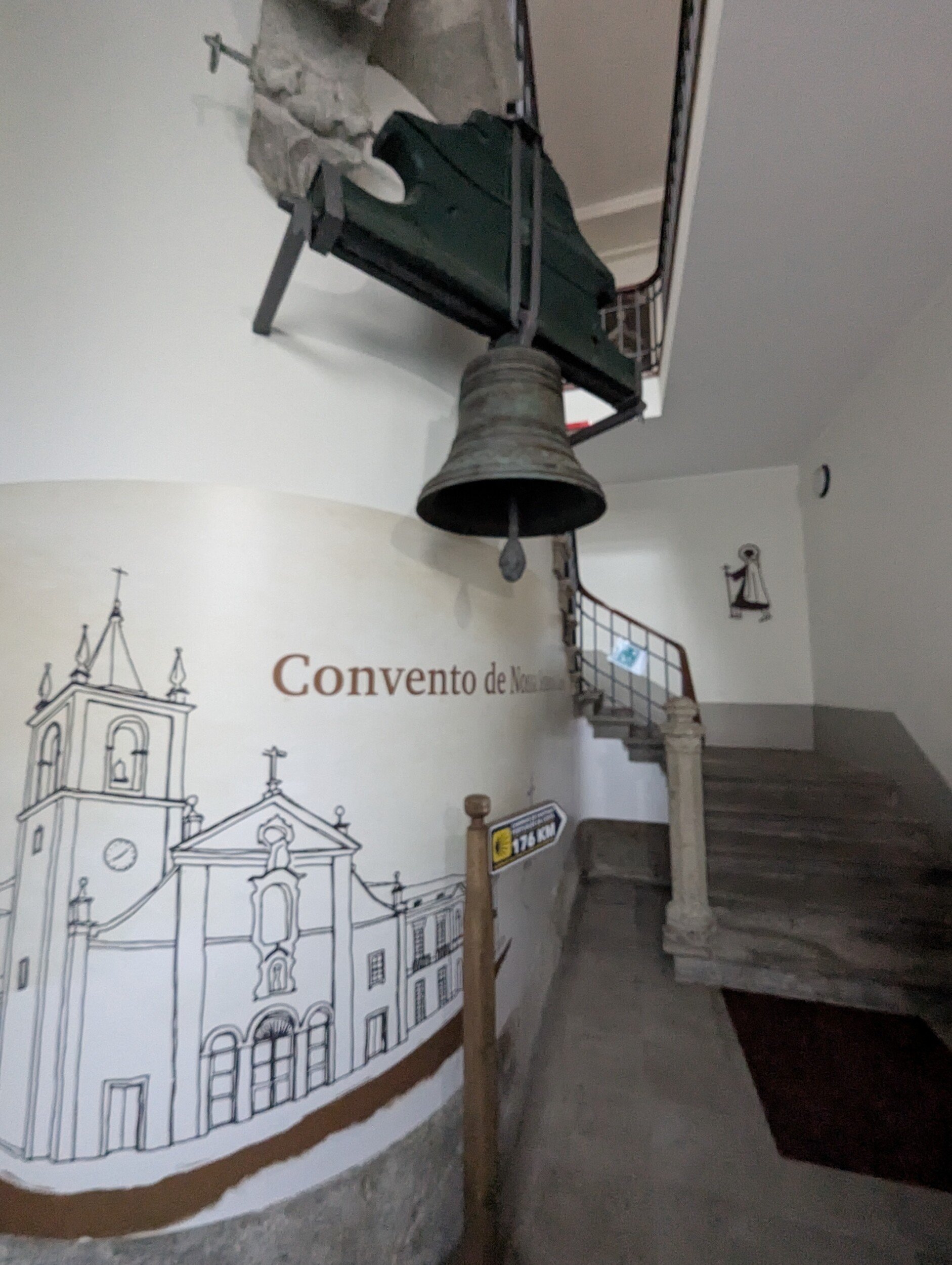
The showers in this hostel were quite small, but the room was large and spaciously arranged. There were beds instead of bunk beds. Check out this hostel.
PS. You may only stay here if you’re walking as a pilgrim and therefore carry a pilgrim passport.
Looking for a Hotel?
Check out this beautiful hotel: Flag Design Hotel
I stayed 2 nights in the beautiful Flag Design hotel. Really a gorgeous hotel, in an old historic building in the center of Viana do Castelo. With a swimming pool on the top floor with naturally a wonderful view over the city. And of course the Santa Luzia basilica in sight.
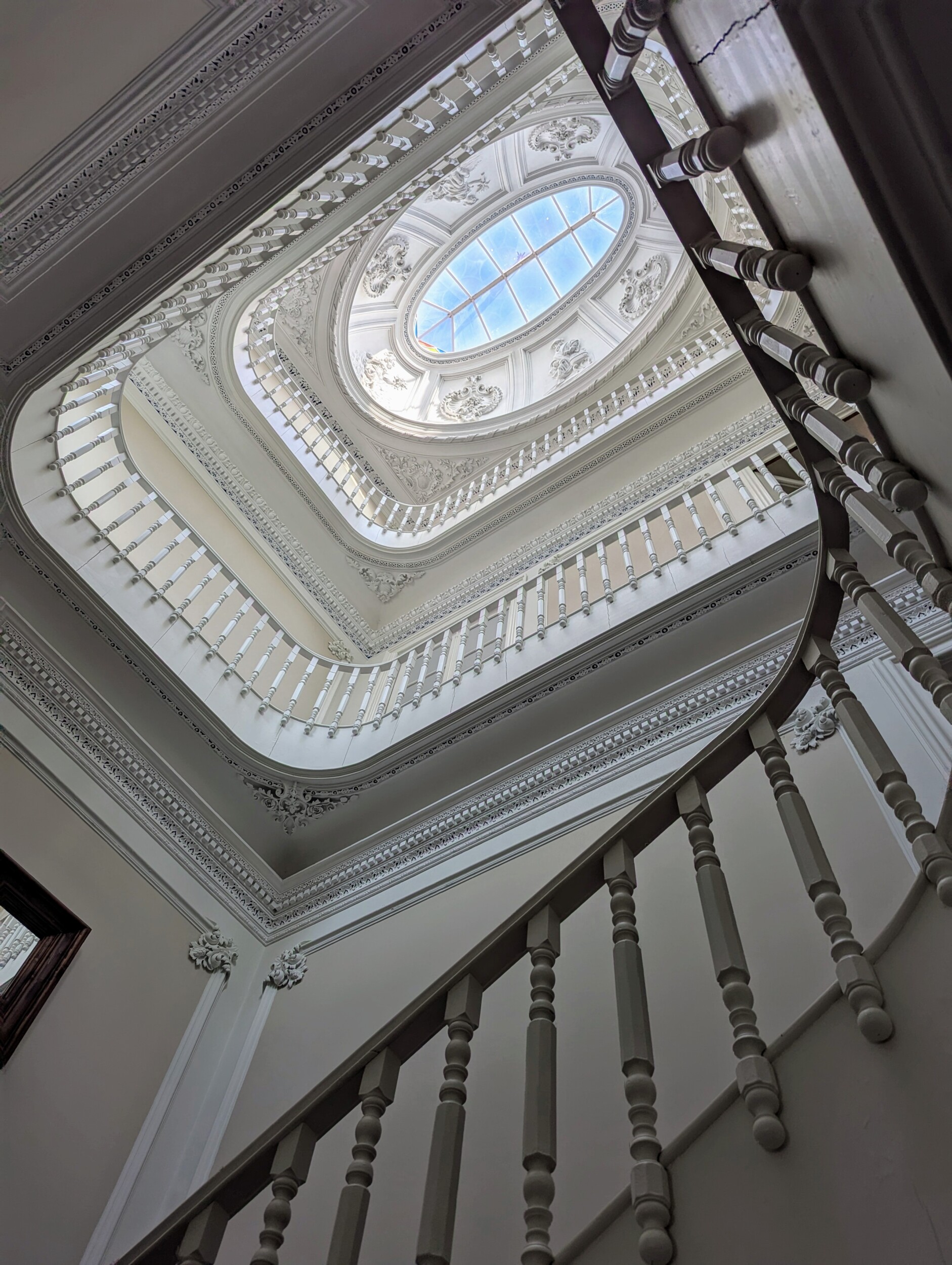
PS. The room I had was truly beautiful, but the toilet and shower had no door. They were behind a wall against which the bed stood. If you’re not alone (like me) in the room, it can feel a bit strange that there’s no door at the toilet. (My hotel room was called Nautica)
We hope this Viana do Castelo travel guide helps you plan your perfect visit to this Portuguese coastal gem!
More inspiration about Portugal?
